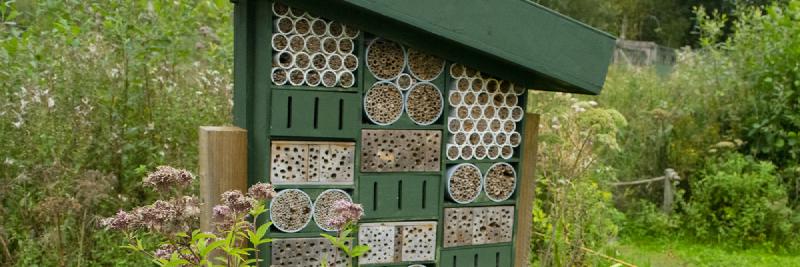Interview with freelance educator Gini Trower about her work with afterschool clubs and nursery groups. She shares her experience getting started as a freelance environmental educator and talks us through a few of her favourite activities.
Find out more about Gini
- Website - https://www.thewalledgardenherts.com/
- Facebook - The Walled Garden - Stanstead Abbotts
- email - ginitrower@btinternet.com
Building birds nests
A bird puppet collects materials to build a nest. The bird sits on the nest and then reveals a blown egg which was hidden in the nest. Kids focus on the materials used and details like mosses and lichens are pointed out. The group then goes out to find materials to build nests. If you have a suitable area, an extra challenge could be to build a nest in bushes or shrubs. This is very difficult, but kids do gain an appreciation for what birds do with just their beaks!
Older kids (6+) also enjoy this activity, and may want to have a turn being the bird puppet.
Making compost
Kids learn about different kinds of soil and its components, focusing on dead plants. They then make their own compost using their own compostables from home (plants, vegetable peels). All this is put into a container and stirred around. Show the group a particularly mouldy fruit or vegetable and point out that even this is compostable.
The compost can then be taken home or added to a big compost heap. The group checks back on the compost each week to see how it changes. A water bottle with holes poked in the lid can be used as a simple watering can so kids can water the compost heap to keep it moist. Eventually the group can use their compost in the garden!
Alternatively kids can layer compostables and sand in a clear bottle. They can place in a few worms and woodlice and watch as they eat the compost and mix it together with the sand over the course of a week or two. Make sure sand or soil is the top layer to avoid smells and flies. If you do get smells, add it to an outdoor compost heap where reinforcement worms can more quickly eat any food.
Insect homes
The group thinks about the needs of insects and considers the kinds of places they might find shelter. The group then goes out to find good places for insects to hide. They then carefully collect plant stems, particularly those which are hollow such as cow parsley. These are cut into lengths, packed into a container with moss to hold it in. These are hung up in the garden or taken home. Some of the homes are taken down a few months later to see if anything has moved in.
Familiarity with the site is important to know if the right plant material is available, otherwise this can be collected elsewhere and brought in. It is also an opportunity to teach about safety and recognizing common plants in their area. Other plants with hollow stems: lilies, lupins, dahlias, rushes, bamboo.
If you are hoping for solitary bees (which don’t sting), put the insect homes in a sunny spot.
